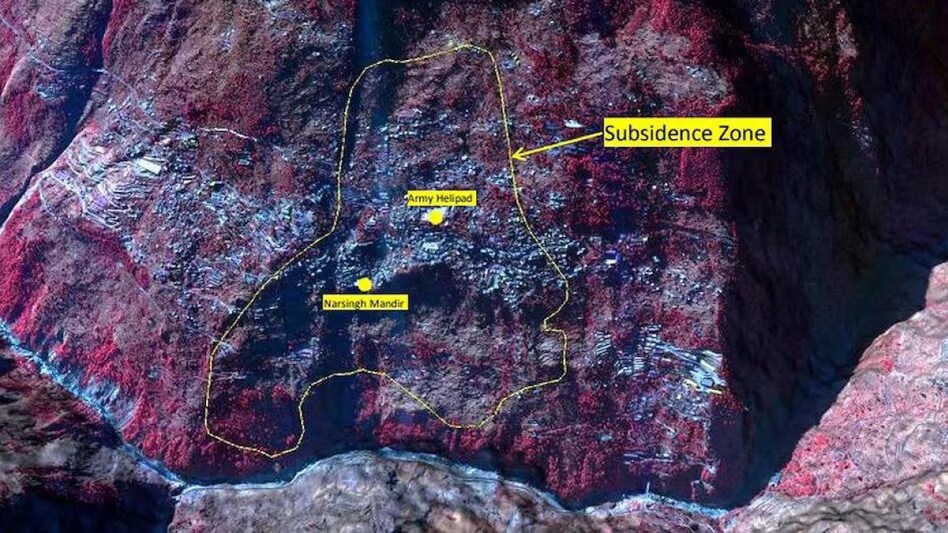
 Joshimath, which sits on a very weak foundation, is witnessing an existential threat as the land beneath is sinking due to land subsidence.
Joshimath, which sits on a very weak foundation, is witnessing an existential threat as the land beneath is sinking due to land subsidence.  Joshimath, which sits on a very weak foundation, is witnessing an existential threat as the land beneath is sinking due to land subsidence.
Joshimath, which sits on a very weak foundation, is witnessing an existential threat as the land beneath is sinking due to land subsidence. Joshimath crisis: The entire town of Joshimath may sink due to rapid land subsidence in the region, according to a preliminary observation by the space agency ISRO (Indian Space Research Organisation). The space agency recently studied the area and found the entire town was witnessing rapid sinking. The holy town in Uttarakhand's Chamoli district sank 5.4 cm in a period of just 12 days.
ALSO READ | Joshimath: What is the NTPC project and why are geologists blaming it?
The ISRO has shared some satellite images it studied and marked the area which is witnessing rapid subsidence - the area comprises the whole of Joshimath town, the army helipad, and Narsingh Mandir. While the visuals suggest a very scary situation, the space agency has not made any prediction, it has just stated the pace of sinking and the area affected by it.

Joshimath, which sits on a very weak foundation, is witnessing an existential threat as the land beneath is sinking due to land subsidence. At least 700 houses in nine wards and several roads have developed cracks, and the entire region has been declared unsafe. Nearly 600 people and 170 families have been moved to safer places.
The space agency's National Remote Sensing Centre studied the satellite images to identify the possible location and extent of land subsidence in long and short time intervals.

The agency processed the imagery using the DInSAR (Differential Interferometric Synthetic Aperture Radar), which is a satellite-based remote sensing technique. DInSAR uses radar images to measure centimeter-level surface displacements.
The identified subsidence zone was correlated with new Cartosat-2S satellite data acquired by ISRO on 7 and 10 January 2023.

The ISRO studied two durations - from April and November 2022, and 27 December and 8 January 2023. The space agency found that slow subsidence occurred - a maximum of 8.9 cm - over a period of seven months between April and November 2022. And from December to January this year, the pace of subsidence was rapid as land sank 5.4 cm in a period of just 12 days.
In its observation, the space agency writes that low subsidence up to -9 cm within the Joshimath town was recorded over a period of seven months, between April and November 2022. And between 27 December 2022 and 8 January 2023, a rapid subsidence event was triggered.
"The region subsided around ~ -5 cm within a span of a few days and the areal extent of subsidence has also increased. But it is confined to the central part of Joshimath town," the space agency said.

ISRO further states that a subsidence zone resembling a generic landslide shape was identified (tapered top and fanning out at base).
While the Centre has already constituted a team of experts to study the cause, geologists who have studied the region blame unchecked rapid construction on unstable land, power projects, deforestation, and improper drainage system behind the sinking.
What makes the matter worse is that Joshimath is sitting on a fragile sedimentary base. The land beneath is not of rock but sedimentary, which is fragile and cannot take further pressure. Geologists say the town cannot be saved now as the damage has been done and the only thing the government can do is to save the people.